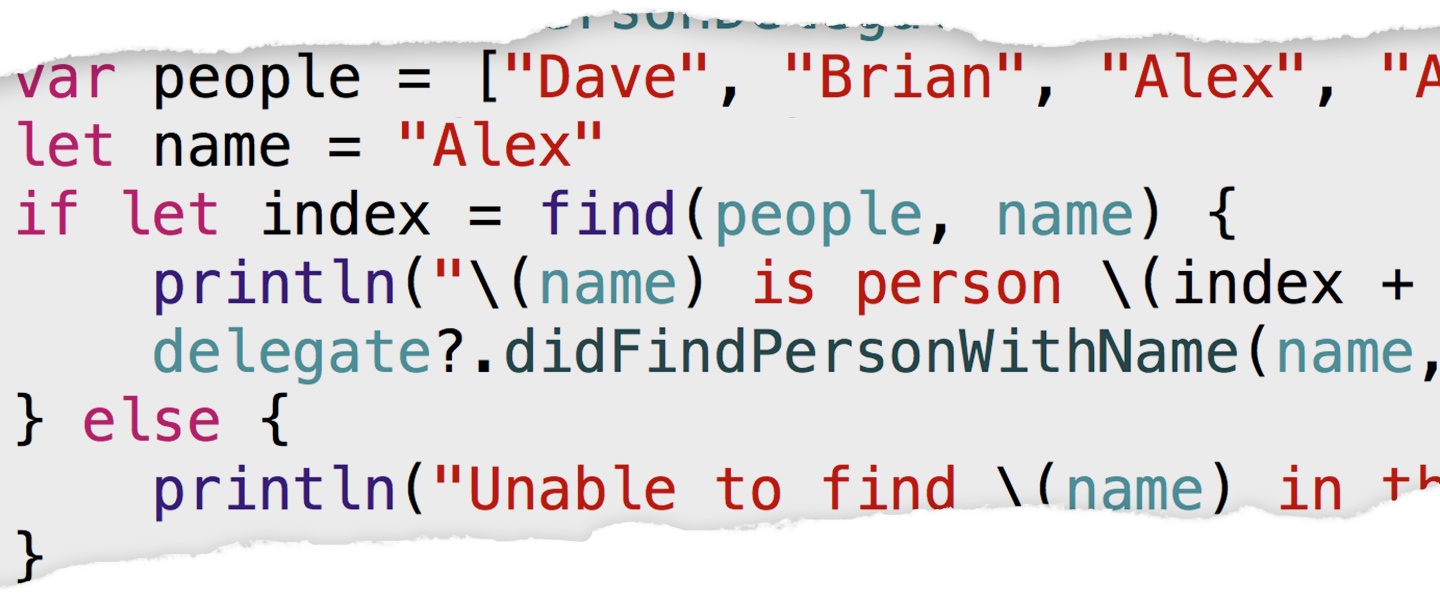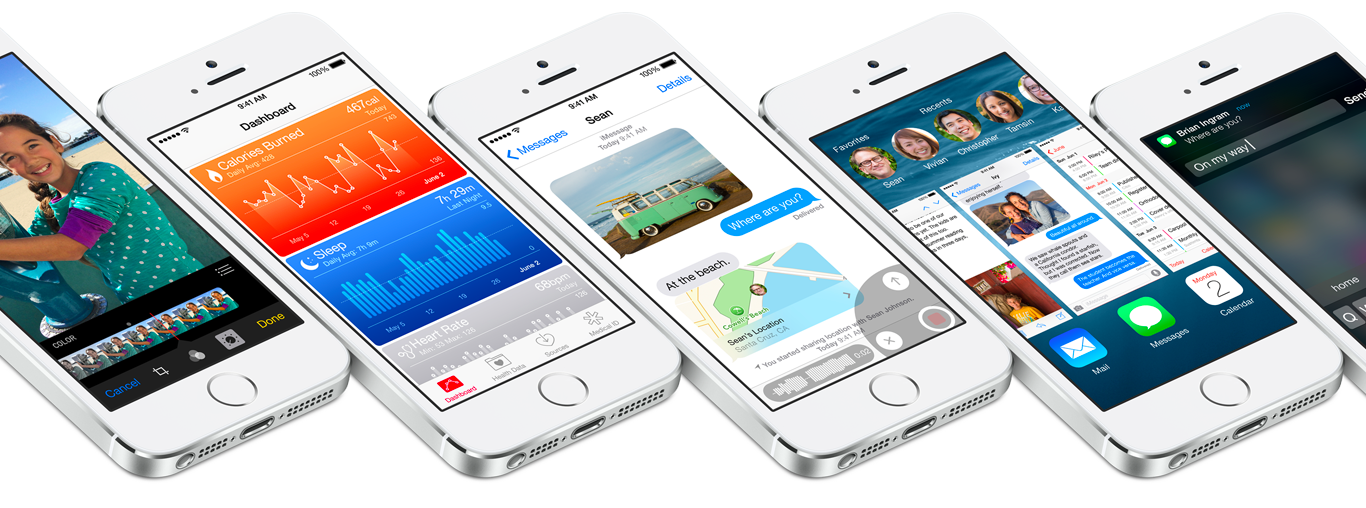It's a pretty exciting time to be a developer for the Apple ecosystem. Apple announced many major changes at WWDC last week & most of us developers are still digesting it all. 4000 new APIs in IOS8 alone. A new programming language. A whole slew of completely new Frameworks that will allow us to explore new markets like Health, Home Automation & Biometrics. Where to start? And more importantly: where to start as a non-developer?
During the next few weeks I will post a series of articles introducing Apple's new technologies. Written by a developer but written for non-developers. If you have an app, are thinking about getting one made or even if you just have a website then you need to understand what last week's changes mean for your company & product. If you still have questions, feel free to email me at
francis@u2uconsult.com.
Today I'll do a general overview of the changes & point you towards the most interesting technologies to explore first. The major change this year is that Apple is now opening up big time. Unlike previous years Apple has made all conference
session videos available to the public. They also have relaxed the NDA a bit so we can start discussing things in public earlier. And to top it off the new Mac operating system will be made available to the public as a beta in just a few weeks. All of these things were un-thinkable last year. And they also mean that I can now actually write a series of articles like this. So let's get started.
If you followed the media a little bit then you will probably know that Apple made three major announcements last week. A new version of IOS, the operating system running on your iPhone. A new version of OSX called Yosemite to power your Mac. And a new programming language called Swift. I recommend you watch the Keynote to get a grip on what was announced. It's ok to gloss over the techie parts & if you don't have a full two hours to dedicate to watching it all, at least plug in your headphones & listen to it. You can even multi-task if you want to, the Keynote was pretty chill & easy to understand. Here's a direct link to the keynote video:
Swift

Let's get the scary new programming language thing out of the way first: at this point Swift should be immaterial to you unless you're a developer. I'm not even going to link to any of the Swift videos in this series of posts. While it is a sea-change for developers it should have no direct impact on you except maybe making IOS development cheaper a year or so down the road. If you have an existing app right now there is no reason to insist your developers switch to Swift. And even if you commission a new app it's probably worth waiting a little longer. Swift isn't even at version 1 yet, it is still in beta and there is no guarantee from Apple that it won't break things.
There's just one exception to this: I see a nice & easy marketing win if you can be one of the first Swift-powered apps in the AppStore. Apple will start accepting Swift apps later this summer, maybe even before the IOS8 launch. Historically Apple has always favored apps adopting new technologies to be featured in their "New & Noteworthy" sections of the AppStore. So if you have an idea for a Swift app there's a window of opportunity here, but you'll have to move fast. Think weeks, not months. Apple is taking a more editorial path towards the AppStore: you can now suggest your app for inclusion in the featured sections by sending an email to appstoremarketing@apple.com, appstorepromotion@apple.com or appoftheweek@apple.com.
IOS8

IOS8 was this year's big star at WWDC. Apple calls it the "Biggest Developer Release Ever". 4000 new APIs. Tons of new frameworks. 800 million iOS devices sold. 130 million new Apple iOS users in the last year & 90% of Apple users are running the latest version of the OS. Most of those users have a credit card on file & show a proven willingness to actually buy software, making it an interesting target market for developers. And Apple is opening up access to that target market big time: with TouchID Apple users will soon be able to login to third-party apps with their fingerprint much like they can now login to some apps with their Facebook account. Apple also made IOS development significantly cheaper with ridiculously generous terms for their new CloudKit hosting service (free, with limits). All of this means they're dangling a very tasty carrot in front of developers & app owners alike.
What does this mean for you? Opportunity! I expect a bit of a goldrush this summer as developers explore the new IOS features and respond to the long-awaited opening up of the system. Developers can now do things like in-app communication & custom keyboards which were standard on Android, but have been missing from IOS. Whole new categories of apps become possible, but Apple keeps a tight rein on what third-party developers can do because to Apple, the user's privacy & security comes first. Apple is once again positioning itself as a niche, high-profit player. In the past they achieved this by focussing on better design & user experience with the Mac. Today, they seem to be doing this by promising better privacy than Google/Facebook on mobile. By creating this environment of trust they allow third-party developers to reap some of those profits in the form of a market with higher paid downloads than Google.
Here are some of the opportunities & markets Apple is opening up with IOS:
Home Automation with HomeKit. Apple wants your iPhone to become the controller to your home's devices: it allows your iPhone to securely pair with your devices & control them, even with voice commands through Siri. Apple has already partnered up with the likes of Philips, Withings & Haier who are presumably adapting their devices to support Apple's new protocol. Since everything depends on how quickly these device manufacturers adopt HomeKit the future looks very uncertain for this.
Health/Fitness with HealthKit. Apple did not deliver an iWatch / fitness wearable similar to the Nike Fuelband but instead chose to offer up an API with Healthkit. HealthKit allows apps that provide health and fitness services to share their data with the new Health app and with each other. A user’s health information is stored in a centralized and secure location and the user decides which data should be shared with your app. When I dug a little deeper into the API it became clear pretty quickly that Apple is very ambitious with this program: they really do want to do more than just store your fitness data. Bordering on medical usage. Apple is allegedly already in talks with the FDA.
Access to the User with TouchID & CloudKit. During this year's talks it was pretty clear that user experience remains front-and-center in Apple's approach to device & software development. While they open up access to their 800-million strong userbase they do so relucantly and with the user's privacy and experience in mind. Yes, users can now authenticate with their fingerprint against your app, but no that does not mean that you get access to tasty user data like email address, etc ...
OSX Yosemite
Just like Apple did a design update for IOS they are doing a design update for
OSX this year. The Mac's interface has been made flatter, more translucent & has generally been standardized. But the changes remain subtle and by far not as jarring as the IOS7 design update last year. Some work will need to be done to update the new look-&-feel for existing apps but at least in this developers' experience the required changes have been minor.
With Yosemite Apple is integrating services like search, Wikipedia, Yelp, etc ... deep into the operating system with e.g. the new Spotlight Search interface. This is a significant move against Google because now a web search effectively begins at the OS level & not in the browser where Google can exert more control. Given Apple's spotty record with providing software services this is an aggressive but at the same time very risky move.
Given OSX's limited market share (40 Mio users or less than 5% of their overall user base) the OS is clearly receiving less attention from Apple. Core operating system changes are limited & instead Apple chose to focus on improving the bundled apps like Messages, Mail & Safari.
The big theme for both OS's this year is what Apple calls continuity: the ability for the user to start an activity like e.g. writing an email on the iPhone & finishing it on the Mac. Part of this continuity is handled by Apple's new iCloud Drive which allows you to store your files in the cloud similar to Dropbox.
Given Apple's *very* limited market share on the desktop & still unproven track record of the Mac AppStore, how will OSX affect you if you have an existing mobile app or are looking into developing one? One word:
continuity. Apple provides new APIs that make it easier for mobile apps to communicate with each other across platform borders: a native OSX app can communicate with its native mobile counterpart & last but not least: with web applications. If you run a product or service with both native & web clients then you absolutely need to look into the new
Handoff API which has strong built-in support for web development.